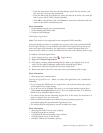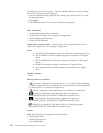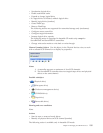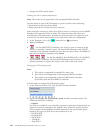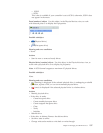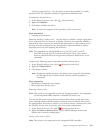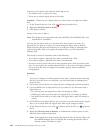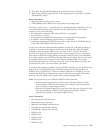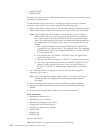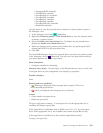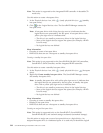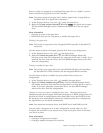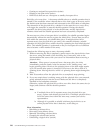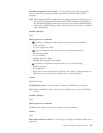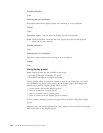3. Click Yes. The ServeRAID Manager sets the drive status to defunct.
4. Replace the selected physical drive. If the logical drive is not offline, a rebuild
automatically occurs.
More information
v Replacing physical drives in an array
v Understanding when RAID level-x0 logical drives change state
Rebuilding
a defunct drive: A physical drive is marked defunct when there is a loss
of communication between the controller and the physical drive. This can be
caused by any of the following:
v An improperly connected cable, physical drive, or controller
v Loss of power to a drive
v An improperly assembled SCSI channel in an unsupported configuration
v A defective cable, backplane, physical drive, or controller
v Connecting unsupported SCSI devices (such as tape drives or CD-ROM drives)
to the same SCSI channel used for an array
In each case, after the communication problem is resolved, a rebuild operation is
required to reconstruct the data for the device in its disk array. The ServeRAID
controllers can reconstruct RAID level-1, level-1E, level-5, level-5E, level-5EE,
level-10, level-1E0, and level-50 logical drives. They cannot, however, reconstruct
data stored in RAID level-0 logical drives because RAID level-0 is not redundant.
If an array contains only RAID level-0 logical drives, the logical drives in the array
are marked offline and the logical drives contain damaged data. You cannot
rebuild the logical drives. You must correct the cause of the failure or replace the
physical drives; then, you must restore your data.
To prevent data-integrity problems, the ServeRAID controllers set the RAID level-0
logical drives in the affected array to blocked during the rebuild operation for
RAID level-1 or RAID level-5. After the rebuild operation is completed, you can
unblock the RAID level-0 logical drives and access them once again. Remember,
however, that the RAID level-0 logical drives contain damaged data.
Note: For logical drives in an IBM ServeRAID Cluster Solution:
v Because shared logical drives can have only one logical drive for each
array, blocking a RAID level-0 logical drive during a rebuild operation
does not apply to shared logical drives.
v Because non-shared logical drives can have more than one logical drive for
each array, blocking a RAID level-0 logical drive during a rebuild
operation does apply to non-shared logical drives.
More
information
v Recovering from defunct drives
v Rebuilding a hot-swap drive
v Manually rebuilding a defunct drive
v Changing the rebuild rate (action)
v Unblocking a logical drive (action)
v RAID level-0
v RAID level-1
v RAID level-1E
v RAID level-5
v RAID level-5E
Chapter 4. Managing ServeRAID devices 141



